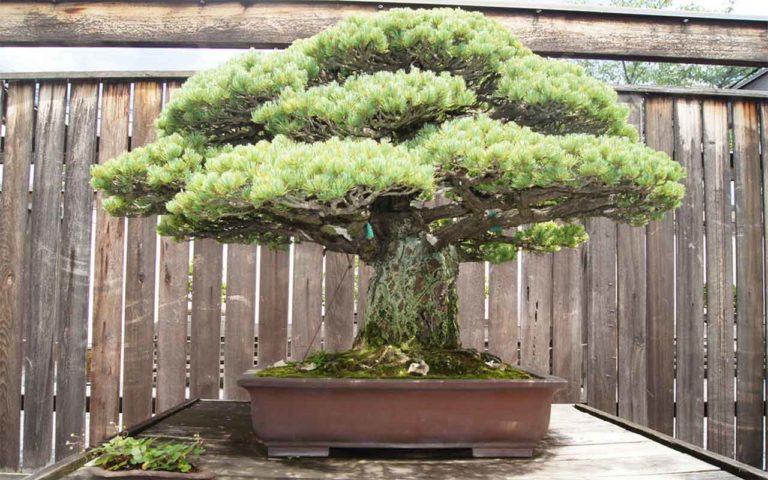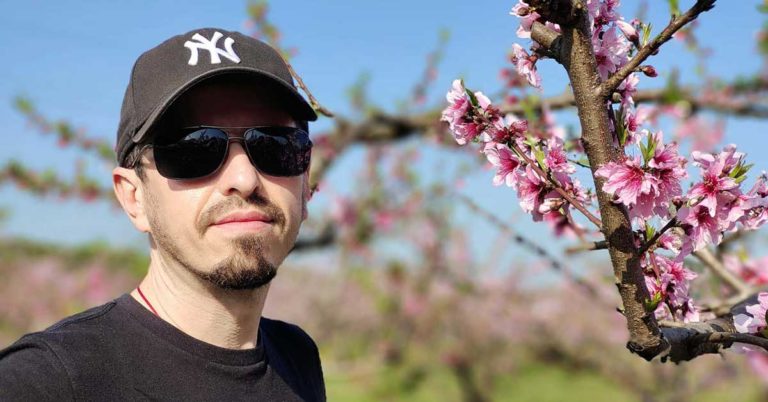The real question is not how big do bonsai trees get, but how big will you let your bonsai grow.
Don’t forget: the art of bonsai is growing a bonsai in a way that reflects your vision and interpretation of nature. You decide of its characteristics, especially when it comes to its size.
Indeed, the size of a bonsai tree is ultimately up to the personal preference and vision of the bonsai enthusiast, aka the Bonsai ka.
While some bonsai artists prefer to keep their trees small and compact, others may allow their bonsai to grow larger, mimicking the appearance of full-sized trees.
Still, there are some rules you should know about sizing a bonsai, let’s dive into it.
The 5 bonsai tree sizes
There are five main sizes of bonsai trees, each with its own unique characteristics and requirements.
- Mame
- Shohin
- Chuhin
- Chumono
- Omono
Bonsai size classification
| Bonsai Size | Height Range | Description |
|---|---|---|
| Mame Bonsai | 10 to 12 cm | The smallest category, suitable for small spaces. Requires frequent care in terms of watering and pruning. |
| Shohin Bonsai | 12 to 22 cm | Slightly larger, known for their delicate appearance and intricate designs. Regular care includes watering, pruning, and wiring. |
| Chuhin Bonsai | 22 to 45 cm | Characterized by a mature appearance with well-developed trunks and abundant foliage. |
| Chumono Bonsai | 70 to 80 cm | Considered medium-sized and often chosen for exhibitions and displays. |
| Omono Bonsai | Up to 110 cm | The largest category, known for their grandeur and complexity. Requires more space and attention, including wire placement, branch management, pruning, and repotting. |
Mame bonsai: 10 to 12 cm
The first size is called the Mame bonsai, which is the smallest category and typically grows from 10 to 12 centimeters in height.
Mame bonsai are perfect for small spaces, such as desks or windowsills. They require frequent watering and pruning to keep your bonsai tree small.
Shohin bonsai: 12 to 22 cm
The second size is called the Shohin bonsai, which is slightly larger, ranging from 12 to 22 centimeters in height.
Shohin bonsai are popular among bonsai enthusiasts for their delicate appearance and intricate designs. They require regular care, including watering, pruning, and wiring to maintain their shape.
Chuhin bonsai: 22 to 45 cm
The third size is called the Chuhin bonsai, which is slightly larger than the Shohin bonsai, ranging from 22 to 45 centimeters in height.
Chuhin bonsai are often characterized by their mature appearance, with well-developed trunks and abundant foliage.
Chumono bonsai: 70 to 80 cm
The fourth size is called the Chumono bonsai, ranging from 70 to 80 centimeters in height. Chumono bonsai are considered a medium-sized category and are often the preferred choice for exhibition and display purposes.
Omono bonsai: up to 110 cm
The last size is called the Omono bonsai, which is the largest category, 110 centimeters in height. Omono bonsai are known for their grandeur and majestic presence.
They often require more space and attention due to their size and complexity. Wire and branch placement are crucial for their development, and regular pruning and repotting are necessary to maintain their health.
Additionally, Omono bonsai may require special equipment and techniques for their care, such as using a crane or a pulley system for maneuvering and moving them. Despite their challenges, a well-maintained Dai bonsai can be a true masterpiece and a centerpiece for any garden or collection.
Is my oversized bonsai still a bonsai?
A bonsai is a meticulously crafted miniature tree, carefully pruned and shaped to mimic its larger counterpart in nature. However, when a bonsai becomes oversized, it raises the question of whether it can still be considered a bonsai.
Bonsai is an art form with specific characteristics and principles, and size is one of them. An oversized bonsai loses the essence of what makes a bonsai so unique and captivating.
It becomes more like a regular tree, lacking the intricacy and charm of a true bonsai.
An oversized or large bonsai tree becomes a « Niwaki« . It may still retain some bonsai-like features in terms of training and styling techniques, but it fails to capture the essence of a true bonsai.
Niwaki is derived from the Japanese words « niwa » meaning garden and « ki » which translates to tree. Niwaki is not merely a horticultural practice, but a reflection of the Japanese culture’s appreciation for nature’s beauty and its integration with human design.
How big will my bonsai get?
It all depends on you! The size of a bonsai tree largely depends on how you manage and care for it.
With regular pruning and shaping, a bonsai tree can be kept relatively small. However, if left to grow without pruning, some species of bonsai trees can reach their natural size, which can vary greatly depending on the species.
It’s important to research and understand the specific species of bonsai tree you have to determine its potential size and how to properly care for it.
Additionally, factors like the age of the tree, the size of the pot, the quality of soil, and the environment it’s kept in can also influence its growth and ultimate size.
The age of the tree plays a crucial role in its growth and ultimate size. Younger trees tend to grow faster and have more potential for growth compared to older trees. As a tree ages, its growth rate slows down, and it may reach its maximum size.
The size of the pot also affects the growth of a tree. If the pot is too small, it restricts the roots’ ability to spread and gather nutrients, resulting in stunted growth. In contrast, a larger pot provides more space for root development, allowing the tree to access more nutrients and water, promoting healthier growth.
The quality of the soil is essential for the tree’s growth. A pot with a good drainage system prevents waterlogging, as excessive moisture can lead to root rot. It should also contain adequate organic matter and nutrients for the tree to thrive. Poor-quality soil can limit the tree’s growth potential.
The environment in which the tree is kept also impacts its growth. Factors like temperature, sunlight exposure, humidity, and air quality affect a tree’s ability to grow and reach its full size. Trees require specific environmental conditions to flourish, and deviations from their ideal requirements can hinder their growth.


